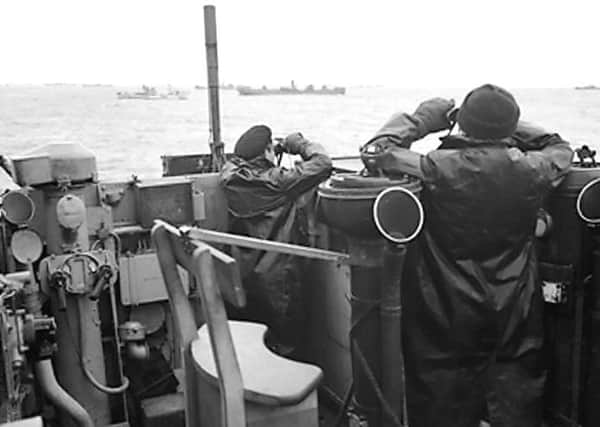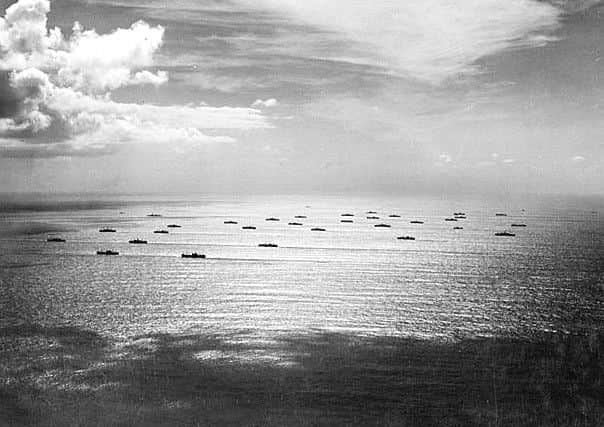How Northern Ireland was key to winning of Battle of the Atlantic


The Battle of the Atlantic was, according to the historian Andrew Williams, the ‘longest, largest and most complex’ conflict in history.
It began in 1939 and only ended with the defeat of Germany in 1945.
Advertisement
Hide AdAdvertisement
Hide AdChurchill claimed: “The only thing that ever really frightened me during the war was the U-boat peril.”


It caused him even greater anxiety than the Battle of Britain in 1940.
The UK was heavily dependent on imported food and raw materials.
We imported 66% of all our food during the war, 30% of our iron ore, 80% of our soft timber and wool, 90% of our copper and bauxite, 95% of our petroleum products and 100% of our rubber and chrome. This dependence on imports made the UK vulnerable.
Advertisement
Hide AdAdvertisement
Hide AdSurvival came at great cost. Between 1939 and 1945, 3,500 Allied merchant ships (totalling 14.5 million tons) and 175 Allied warships were sunk and 72,200 Allied naval and merchant seamen lost their lives.
The Germans lost 783 U-boats and approximately 30,000 sailors killed.
Historians differ as to how close the UK came to disaster. For example, there is tendency to focus on the fact that over 720,000 tons of Allied shipping were lost between July and December 1941 but to disregard the fact that 1.6 million tons were saved or to note that in March 1941 U-boats sunk 41 ships and to overlook the fact that three of Germany’s ablest and most dangerous U-boat captains were ‘neutralised’.
Admiral Dönitz, the creator and commander of Germany’s U-boat fleet, contended that he needed 300 U-boats to deliver Hitler victory.
Advertisement
Hide AdAdvertisement
Hide AdHe started the Second World War with only 43 U-boats but ended it with 463. It is just as well that Dönitz did not start the war with the latter number.
Mercifully, Hitler had little grasp of naval strategy and only recognised the full potential of U-boats to deliver him victory comparatively late in the day. Although Dönitz succeeded Hitler as German head of state in 1945, fortunately he was not a particularly influential figure in 1939.
Nicholas Monsarrat, a member of the RNVR who commanded a frigate during the Battle of the Atlantic, captures the flavour of the conflict in his novel ‘The Cruel Sea’ in a manner never likely to be surpassed.
Monsarrat was unstinting in his admiration for the Merchant Navy and especially the crew of oil tankers: “They lived … as a man living on the top of a keg of gunpowder: the stuff carried – the lifeblood of the whole war – was the most treacherous cargo of all; a single torpedo, a single small bomb, even a stray shot from a machine gun, could transfer their ship into a torch.”
Advertisement
Hide AdAdvertisement
Hide AdMonsarrat viewed Eire’s neutrality with well merited contempt: “In the list of people you were prepared to like when the war was over, the man who stood by and watched while you were getting your throat cut could not figure very high.”
On May 9 1943, when the services of J M Andrews, Northern Ireland’s second prime minister, were recognised by his being made a Companion of Honour, Churchill acknowledged the contribution of Northern Ireland in keeping open the Atlantic lifeline.
With Eire’s refusal to grant Britain access to the recently handed-over Treaty ports, Northern Ireland was the most westerly part of the United Kingdom from which air sorties and convoy escorts could be mounted.
Catalina and Sunderland flying boats operating from Castle Archdale in Co Fermanagh made an important contribution to closing ‘the ocean gap’ in waging the Battle of the Atlantic.
Advertisement
Hide AdAdvertisement
Hide AdLarge numbers of American, British and Canadian ships based at Lisahally, near Londonderry, played a vital role in defeating the U-boat peril.
As the official war historian J W Blake in ‘Northern Ireland in the Second World War’ (1956) opined: “Londonderry held the key to victory in the Atlantic.
“It became our most westerly base for the repair, the working up and refuelling of destroyers, corvettes and frigates.
“By that critical spring [1943] when battle for the security of our Atlantic lifelines finally turned our way, Londonderry was the most important escort base in the north-western approaches.”
Advertisement
Hide AdAdvertisement
Hide AdWhen the official surrender of the German U-boat fleet took place on May 15 1945, the Commander-in-Chief of Western Approaches, Admiral Max Horton, insisted that it took place at Lisahally in recognition of its pivotal significance during the Battle of the Atlantic.
Churchill has nothing to say in his ‘History of the Second World War’ about the crucial role of Bletchley Park and the breaking of the German codes because before the publication of F W Winterbottom’s ‘The Ultra Secret’ in 1974, what happened at Bletchley during the Second World War was not in the public domain.
The cracking of Enigma was the best kept secret of the 20th century. Hence Churchill’s reference (in private) to the staff at Bletchley as “the geese that laid the golden eggs and never cackled”.
Bletchley succeeded in decoding 1.2 million of the 1.55 million Kriegsmarine signals intercepted. Because Bletchley had cracked Enigma in April 1941, between July and December 1941 Allied convoys were expertly rerouted.
Advertisement
Hide AdAdvertisement
Hide AdIn February 1942 the Kriegsmarine introduced an extra rotor wheel to the Enigma machines used by U-boats in the Atlantic.
For 10 grim months Bletchley could not crack the new code. Thus in 1942 U-boats sank 1,859 ships totalling over seven million tons.
Cracking the Kriegsmarine’s new code decisively tipped the balance in favour of the Allies. Although U-boat strength reached its operational peak in May 1943, with 240 operational U-boats (of which 118 were at sea), the sinking of Allied ships continued to decline.
The same month saw the greatest losses suffered by U-boats up to that point, with 41 being destroyed in May 1943 – more than a third of those at sea.
Advertisement
Hide AdAdvertisement
Hide AdOn May 24 1943 Admiral Dönitz, shocked at the scale of these reverses, ordered a temporary halt to the U-boat campaign. Most were withdrawn from operational service.
The Battle of the Atlantic was far from over but the outcome was no longer seriously in doubt.